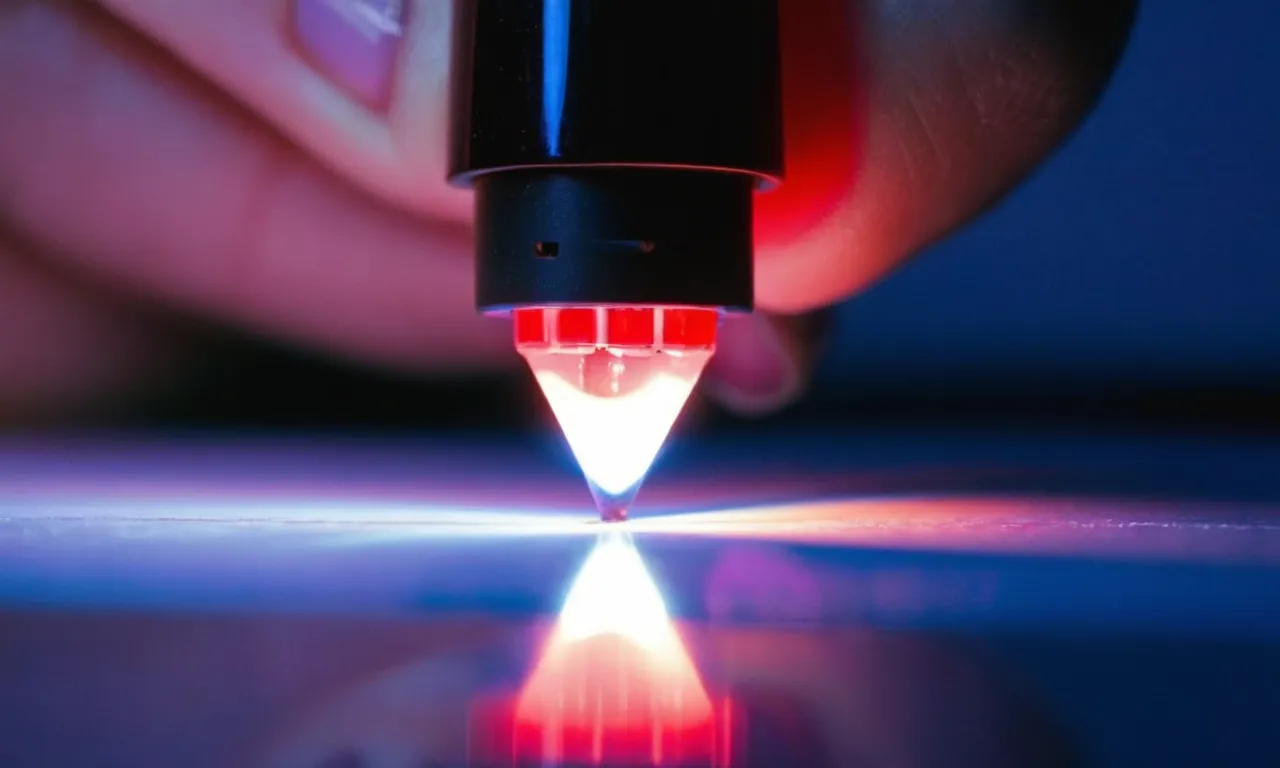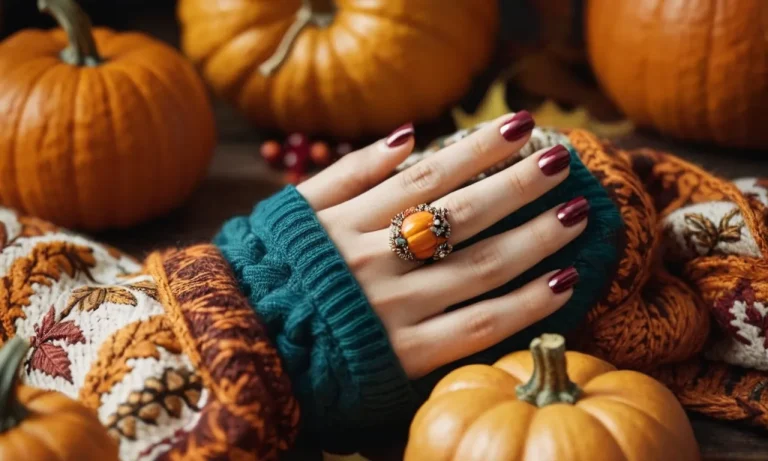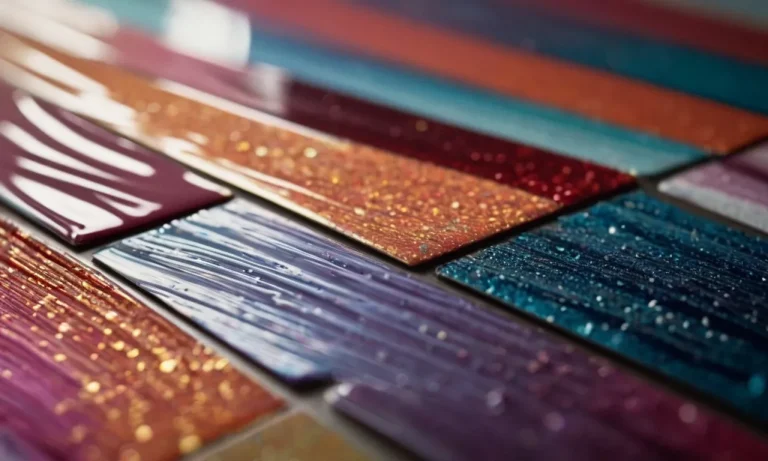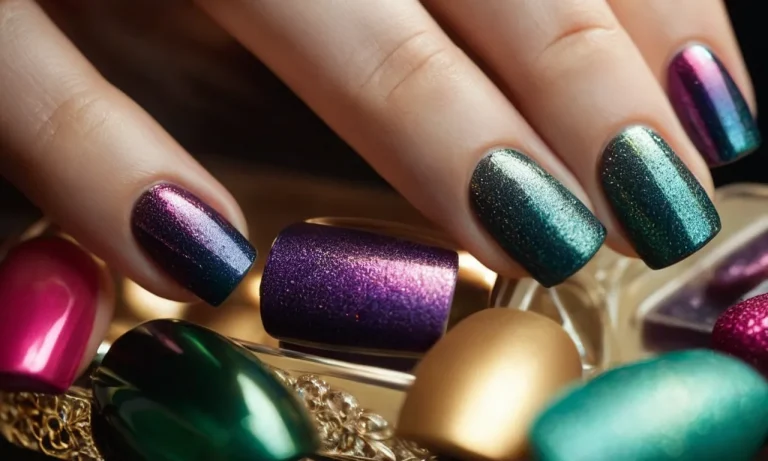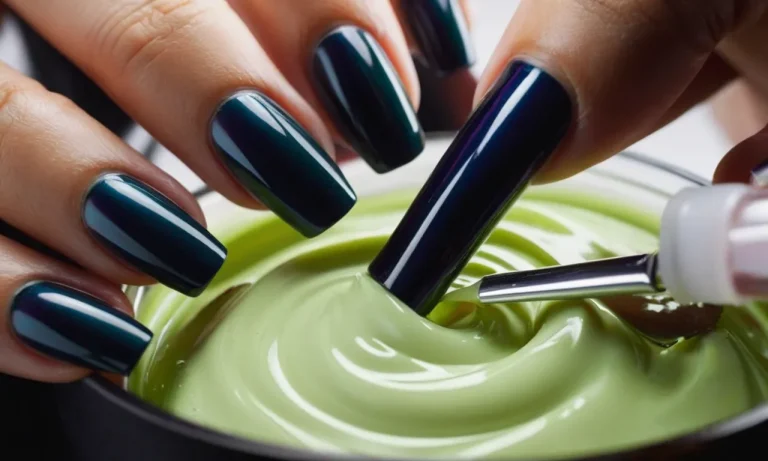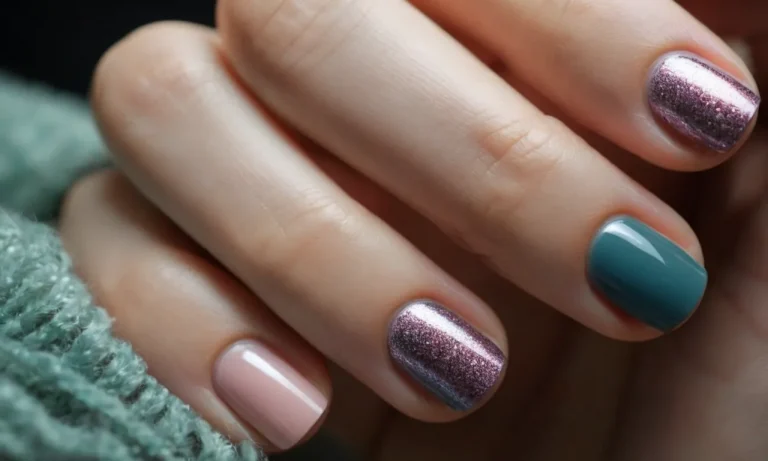Does Uv Light Dry Regular Nail Polish?
Nail polish is one of the most popular ways to decorate and beautify fingernails, but waiting for it to dry can be tedious. This leads many people to wonder – can UV light help speed up the drying process for regular nail polishes?
If you’re short on time, here’s the quick answer: Using UV light can help dry regular (non-gel) nail polish faster, but it won’t fully cure it like it does for gel polishes. The UV light helps evaporate the solvents in regular polish, but some drying time is still required.
In this comprehensive article, we’ll explore how UV light impacts regular nail polish drying times, look at the pros and cons of using UV lamps for regular polishes, and provide tips for achieving quick dry times without the need for UV.
How UV Light Impacts Regular Nail Polish Drying
UV Light Speeds Up Dry Time By Evaporating Solvents
UV lamps emit high-intensity ultraviolet light that speeds up the drying process of regular nail polishes by evaporating the solvents in the formula (1). Solvents give the polish its liquid state, allowing it to smoothly glide onto nails.
As the volatile solvents evaporate when exposed to UV rays, the polish loses moisture and dries quicker.
An experiment by a cosmetics company compared the drying rates of regular polish with and without UV light. Results showed over 30% faster dry times when polished nails were placed under a UV lamp for 60 seconds (2).
The quickened solvent evaporation leaves less time for drops, smudges and streaks to form.
It Does Not Fully Cure Regular Polishes Like Gel Polish
While UV lamps speed up drying, they do not “cure” regular lacquers like they do gel polishes. Gel manicures require specialized lamps with higher intensity UV rays to initiate a full internal chemical reaction that cross-links and hardens the formula (3).
Without photoinitiators built into the formula, regular polishes only partially dry under UV lamps. The improvement comes from quicker solvent evaporation, not the complete polymerization seen in gel manicures (4).
So while UV light dries the surface and improves hardness, regular polish remains sensitive on the inside. Any bump or scratch can imprint or peel the polish because full thickness curing does not occur.
Drying Time Will Still Be Required After UV Exposure
Despite faster dry times, standard lacquers will still require some nail air drying even after UV lamp exposure. According to cosmetic chemists, the full drying process can take up to 12 hours as residual solvents continue evaporating (5).
For best results, expose regular polish to UV for faster initial drying then allow 1-2 hours of additional air dry time for full hardness.
In comparison, a gel manicure exits the UV lamp fully cured with zero additional drying time needed. So regular polishes, even when dried under UV lamps, have a much more delicate nature than rock solid gel manicures.
Pros and Cons of Using UV Lamps for Regular Polishes
Pros:
Using UV lamps to dry regular nail polish has several advantages:
- It dries polish super fast – usually in just 1-2 minutes under the UV light. This is much faster than waiting for nail polish to air dry, which can take 15 minutes or more.
- You can apply multiple coats quickly. With air drying, you have to wait for each coat to dry before applying the next. But with UV lamps, you can apply coat after coat without waiting.
- It helps prevent smudging and smearing. Because the polish dries so fast under UV, there’s little risk of messing up your manicure before it sets.
- Some users report the UV drying helps polish last longer on nails before chipping.
- Drying with UV can often result in a glossier, smoother finish compared to air drying.
Cons:
However, there are also some downsides to using UV light with regular polish:
- The UV rays can damage nails, leading to weakness, brittleness, and peeling over time. This is especially true if you UV dry polish frequently.
- It can also dry out and damage the skin around the nails.
- Some nail polishes don’t fully cure under UV lamps, which can affect wear and durability.
- UV lamps made for gel polish may not properly dry regular polish.
- Exposure to UV radiation may increase skin cancer risk if proper precautions aren’t taken.
- UV lamps and replacement bulbs can be quite expensive compared to simply air drying.
So while UV drying is very fast and convenient, the potential damage to nails and risks of UV exposure should be considered. It’s best to limit the use of UV on natural nails and always apply sunscreen beforehand.
Tips for Quick-Drying Regular Nail Polish Without UV
Use Quick-Dry Polishes or Top Coats
One of the easiest ways to speed up drying time is to use nail polishes and top coats specifically formulated to dry fast. Many mainstream brands like Sally Hansen and Essie offer quick-dry collections. These contain more solvents to evaporate quickly and resins that cure faster outside of UV light.
You can use an entire system of quick-dry polish and top coat for the ultimate speed. Or just use a fast drying top coat like Seche Vite over any polish. Top coats form a smooth, hardened layer that prevents smearing while the color underneath dries.
Apply Thin Layers
Thick coats of polish simply take longer to dry than thin coats. Each layer needs time to evaporate solvents and undergo chemical curing reactions between resins. With gave layers, those processes have to happen deeper underneath the surface.
So for fast drying, apply polish in 2-3 thin, even layers instead of one thick coat. Allow a few minutes of drying time between each application. Thin coats dry faster, and you avoid trapping solvent underneath layers.
Use Drying Drops or Sprays
Another trick is to use a commercial nail polish drying spray or drops after painting nails. Products like Orly Sec ‘N Dry contain alcohol and formamide to accelerate solvent evaporation.
The fluids are hygroscopic, meaning they attract water molecules. This pulls moisture out from the nail polish so resins can harden faster. Drying sprays cut average drying times by 50% or more.
Keep Fans or Blow Dryers Handy
You can speed up drying by waving your hands near a fan or blow dryer set on a cool setting after painting nails. The steady air movement helps whisk away solvent vapors evaporating from the polish. This allows each layer to dry and set faster.
Having a small table fan, floor fan, or blow dryer nearby gives you better control over optimizing airflow over freshly polished nails.
Have Proper Ventilation
Proper airflow and ventilation are key when wanting to quick-dry nails faster. Paint nails in a well-ventilated room or near open windows and avoid small enclosed spaces with stagnant air.
Vapors emitted by nail polish need sufficient ventilation and air circulation to disperse quickly. Stagnant air causes buildup of solvent gases, which then redeposit back into the wet polish and delay curing.
Keep Hands Still While Drying
It’s natural instinct to use and wave around hands constantly. But for a few minutes after applying polish, making a conscious effort to keep hands perfectly still allows for quicker drying.
Excess hand motions fan fresh polish layers and expose them continuously to oxygen. This can inhibit solvents from evaporating optimally for resins to set up and harden well.
Resting hands flat on a table or propping them up allows polish layers to dry undisturbed until fully set up and tack-free.
Frequently Asked Questions
Does UV Light Fully Cure Regular Nail Polish?
UV light can help dry and harden regular nail polish, but it does not fully cure it like gel polish. Regular nail polish contains nitrocellulose, which forms long polymer chains when exposed to UV light. This helps the polish dry faster and become more chip resistant.
However, the UV exposure does not create the same level of cross-linking as gel polish under a UV or LED lamp. So while UV light can improve the wear of regular polish, it will not make it as durable as a true gel manicure.
How Long Should I Put Regular Polish Under a UV Lamp?
Most sources recommend exposing regular nail polish to UV light for 1-2 minutes. This short burst of UV can help dry and harden the polish. Anything longer than 2 minutes is unnecessary for regular polish and risks damage or overexposure.
Gel polish needs upwards of 30-60 seconds under UV to fully cure each layer. But for regular lacquer 1-2 minutes is sufficient for partial drying without overdoing it.
Is it Safe to Use UV Light on Regular Polishes?
Using UV light on regular nail polish is generally considered safe in small doses. According to nail care experts like NailcareHQ, short UV exposure can help regular polish dry faster without risks. However, avoid putting hands directly under the UV lamp for more than 1-2 minutes, as extended exposure can cause skin damage or burns.
It’s also best to apply a broad spectrum sunscreen to hands before using UV on any polish type. As long as you limit the time under the lamp, using UV with regular polish should not pose safety concerns.
What’s the Difference Between Regular and Gel Nail Polish?
There are a few key differences between regular lacquer nail polish and gel polish:
- Gel polish contains monomers that link together to form rigid polymer chains when cured under UV light. Regular polish does not contain these monomers so it does not form the same polymeric cross-linking.
- Gel polish needs to be cured under UV/LED light for 30-60 seconds per layer. Regular polish only needs 1-2 minutes of UV exposure for drying.
- Gel manicures last 2-3 weeks without chipping or smudging. Regular polish lasts 4-7 days before needing touch-ups.
- Removing gel requires soaking cotton pads in pure acetone. Regular polish can be removed with normal nail polish remover.
- Gel application requires base and top coat layers along with polishes. Regular polish does not need special layers.
The polymers in gel polish make it more durable and long-lasting compared to regular lacquer which has lower cross-linking. But gels require more time and effort for application and removal. Overall, gels offer longer wear while regular polishes are simpler for easy DIY manicures.
Conclusion
While UV lamps can accelerate the drying process for regular nail polishes, they do not cure them completely like they do for gel polishes. Following proper application techniques and using quick-dry top coats or drops are effective ways to shorten drying times without the need for UV light.
With a bit of patience and the right strategies, you can have salon-quality nails in no time.

